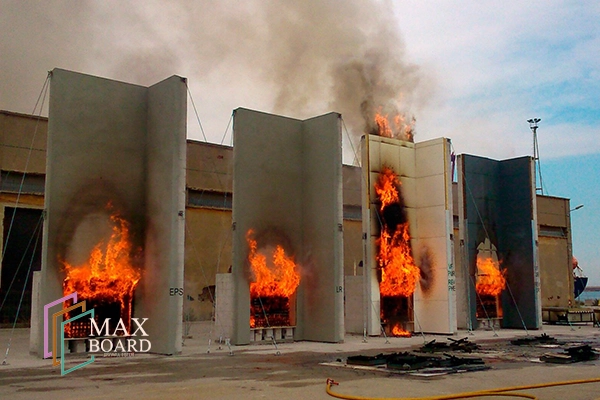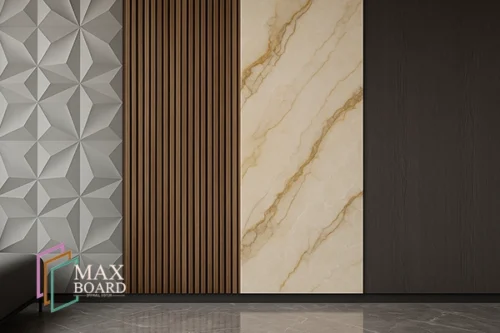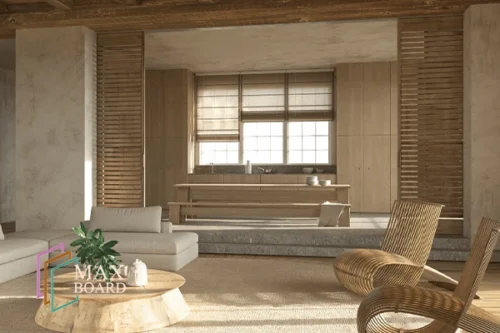In today’s construction industry, fire safety is no longer an afterthought—it’s a central concern in building codes, design strategies, and material selection. Every year, fires in buildings cause devastating losses of life, property, and economic stability. Choosing the right fire-resistant building materials is one of the most effective ways to reduce risk and ensure long-term safety.
This comprehensive guide will explore the importance of fire safety in modern construction, examine the role of fireproof construction panels and non-combustible wall boards, and help you understand how to make informed decisions to protect lives and assets.
1. The Rising Need for Fire Safety in Construction
With urban density increasing and climate change contributing to higher temperatures and dry conditions, the risk of fire outbreaks in both residential and commercial buildings is growing. According to the National Fire Protection Association (NFPA), structure fires account for a significant portion of total fire-related fatalities worldwide.
Key contributing factors include:
- The use of combustible materials like untreated wood, plastic, or polystyrene
- Electrical faults, overloaded circuits, or substandard wiring
- Increased use of electronics and appliances in confined spaces
For architects, developers, and homeowners alike, understanding fire dynamics and choosing fire-resistant building materials is a crucial step in preventing tragedies.
2. What Does Fire Resistance Really Mean?
Fire resistance refers to the ability of a material or assembly to withstand fire exposure, limit the spread of flames, and maintain structural integrity for a given period. This is usually quantified through standardized fire ratings, such as:
- ASTM E119: Measures the fire endurance of wall assemblies
- EN 13501-1: Classifies materials from A1 (non-combustible) to F (highly flammable)
- NFPA 285: Assesses flame propagation in exterior wall assemblies
Fire Rating Classifications:
- Class A (EN A1): No contribution to fire, excellent protection
- Class B: Very limited contribution
- Class C-F: Moderate to high combustibility
Understanding these ratings helps stakeholders choose the right material for specific project requirements.
3. Common Fire Hazards in Building Design
While fire incidents are often triggered by electrical or mechanical failures, building design and materials play a significant role in the spread and severity of fires.
High-risk design features include:
- Open-plan spaces without compartmentalization
- Use of synthetic or flammable insulation
- Hidden voids that allow fire to travel undetected
Critical fire risk areas:
- Stairwells and elevator shafts
- Ceilings and attic spaces
- Wall cavities and service risers
Preventing fire spread requires proactive material selection, detailed planning, and regular safety inspections.
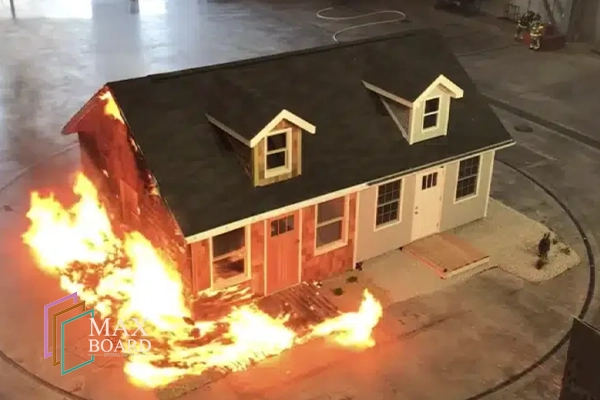
4. Essential Characteristics of Fire-Resistant Building Materials
When evaluating materials for fire safety, the following properties are essential:
A. Non-combustibility
Materials that do not ignite, burn, or contribute to the spread of fire (e.g., stone, gypsum, metal composites).
B. Thermal Insulation
The ability to delay temperature rise on the non-fire side of a wall, protecting adjacent spaces.
C. Smoke Resistance
Low emission of toxic gases or smoke during combustion. Many fire deaths are due to smoke inhalation, not flames.
D. Structural Stability
Some materials retain strength during fire, preventing collapse.
E. Fire-Rated Certification
Independent lab testing under recognized standards is essential to verify performance.
5. Types of Fire-Resistant Building Materials
Modern construction relies on a wide range of fire-resistant materials, each suited to different applications:
1. Fire-Resistant Gypsum Boards
Made with glass fiber reinforcement and additives, these boards resist ignition and slow down fire propagation. Common in interior walls and ceilings.
2. Cement Boards
Inorganic and non-combustible, cement boards offer high resistance to fire and moisture. Widely used in wet areas and external sheathing.
3. Magnesium Oxide (MgO) Boards
MgO boards offer superior fire performance (A1-rated), are mold-resistant, and highly durable. Ideal for fire walls and partitioning.
4. Mineral Wool Insulation
Non-combustible, thermally stable up to 1000°C. Used in cavity walls, roof assemblies, and fire-rated enclosures.
5. Intumescent Coatings
Paint-like substances that expand when heated, creating an insulating barrier to delay fire impact on steel or wood.
6. Advantages of Using Fireproof Construction Panels
Switching to fireproof construction panels enhances the resilience of a building. The advantages include:
- Compliance with global fire codes and insurance requirements
- Reduced fire spread and heat transfer
- Increased evacuation time for occupants
- Protection of structural components from collapse
- Reduced liability and operational downtime after a fire event
For developers and engineers, these panels often become the first line of defense in achieving passive fire protection.
7. Applications of Non-Combustible Wall Boards
Non-combustible wall boards are used in:
- High-rise residential towers
- Hospitals and educational facilities
- Commercial kitchens and server rooms
- Emergency stairwells and fire escape corridors
They serve as fire barriers and allow for architectural flexibility while ensuring occupant safety.
8. How to Choose the Right Fire-Resistant Materials
Choosing the right material depends on:
- Building occupancy type (residential, commercial, industrial)
- Fire load and fuel sources
- Required fire rating and duration (30, 60, 120 minutes)
- Budget and design constraints
Always consult fire engineers and verify certificates from accredited labs before procurement.
9. Cost Considerations and ROI
Although fire-resistant building materials may carry a premium upfront, the return on investment is realized through:
- Lower insurance premiums
- Reduced repair and replacement costs post-incident
- Long-term occupant safety and building integrity
In some regions, green building incentives or tax credits apply for using fire-safe materials.
10. Regulatory Standards and Building Codes
Fire safety regulations vary by region, but commonly follow:
- International Building Code (IBC)
- NFPA codes (USA)
- BS 476 (UK)
- EN 13501 (Europe)
Understanding these codes ensures proper compliance and helps in getting permits approved faster.
11. Challenges in Implementing Fire-Safe Design
While materials are crucial, integration into design is equally important. Common challenges include:
- Improper installation of fire-rated assemblies
- Lack of coordination between architects and MEP teams
- Inadequate inspections or firestopping measures
Education, training, and third-party certification go a long way in overcoming these hurdles.
12. Fire Testing and Certification Bodies
Trustworthy certifications come from organizations like:
- UL (Underwriters Laboratories)
- Intertek (Warnock Hersey Mark)
- FM Global
- European CE Marking
When purchasing materials, request the latest test reports and ensure products meet or exceed minimum standards.
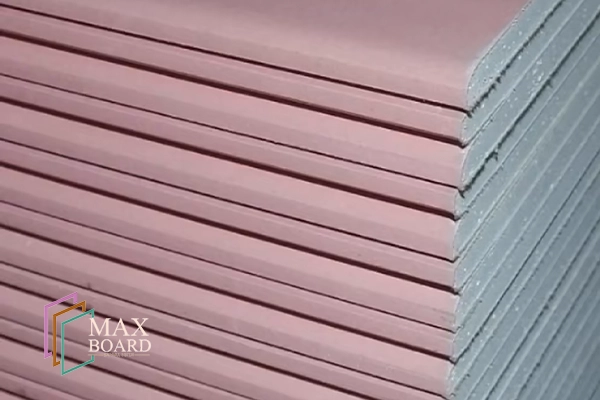
13. Future Trends in Fire-Resistant Materials
Innovations include:
- Aerogel-based insulations with ultra-low conductivity
- Nanocoatings for steel protection
- Recycled composite panels with fire additives
As sustainability meets safety, the next generation of materials will offer both fire protection and environmental performance.
14. Introducing Maxboard’s Fire-Resistant Board
At Maxboard, we offer a state-of-the-art fire-resistant construction panel designed for maximum protection in high-risk zones. Our board:
- Is made from non-combustible magnesium oxide (MgO)
- Achieves Class A1 fire rating under EN 13501
- Is lightweight, durable, and easy to install
- Compatible with tiles, paints, and cladding
- Ideal for residential, commercial, and institutional use
Whether you’re planning a new build or upgrading existing spaces, our panel ensures unmatched safety and peace of mind.
👉 Explore the Maxboard Fire-Resistant Panel here: https://maxboard-mgo.com/products/fire-resistant-board
15. Conclusion
Fire safety is not optional—it’s essential. By choosing fire-resistant building materials, including fireproof construction panels and non-combustible wall boards, you’re investing in safety, performance, and long-term peace of mind.
For safer buildings and smarter choices, start with the right materials.
Read more on:
https://www.nfpa.org/News-and-Research/Data-research-and-tools

